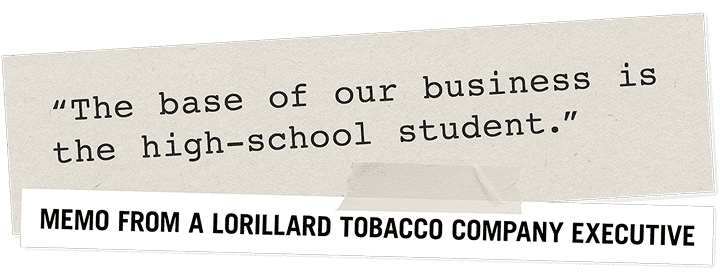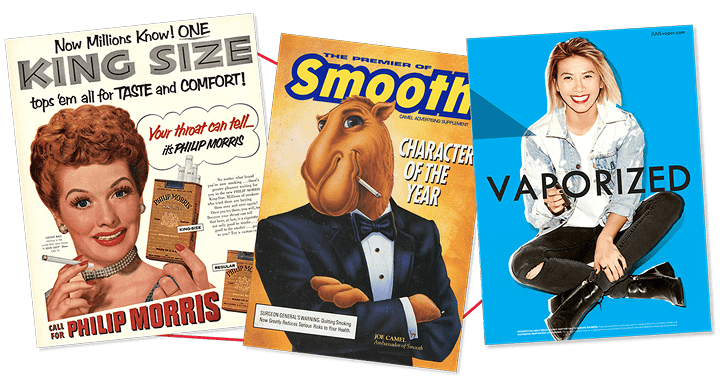
tobacco targets
Youth



Sweet Flavors. Sleek Devices. Same Dangerous Product.
Children and teens are impressionable, and the tobacco industry uses that to its advantage. While policies like Tobacco 21 have made selling flavored tobacco to minors more difficult, many e-cigarettes and vape products create loopholes. Companies capitalize on gaps in legislation by offering kid-centric flavors such as vanilla, gummy bear and cotton candy. They have also updated their product designs, recently adding “smart” vapes equipped with games, Bluetooth and more.

Marketing Disguised as Entertainment
Flavors aren’t the only way tobacco companies attract young people. Their marketing strategies go far beyond the stores:
- Characters in teen TV shows and video games use vapes.
- Celebrities promote vape brands during concerts and music festivals. For example, Juul sponsored a music festival at the Sundance Film Festival in 2018, complete with free samples and a vapor lounge.¹
- Vape companies make false health claims. For example, many vape companies claim their products decrease or soothe mental health struggles. In reality, nicotine causes irritability, mood swings, anxiety, depression and more.
Some vape companies have also offered college scholarships, asking high school students to write essays on why vaping is safer than smoking in an effort to eliminate the stigma.² Yes — they’re paying teens to defend vaping.
“Younger adult smokers have been the critical factor in the growth and decline of every major brand and company over the last 50 years. They will continue to be just as important to brands/companies in the future for two simple reasons: The renewal of the market stems almost entirely from 18-year-old smokers. No more than five percent of smokers start after age 24.”
– Memo from R.J. Reynolds Tobacco Co. researcher Diane Burrows, February 29, 1984

The “Replacement Smoker” Strategy
For decades, tobacco companies have worked to replace the customers they lose to death or quitting. They call these new users “replacement smokers.”
In the 1920s, they used celebrities and cartoon characters to make smoking look cool. Today, the strategy has evolved — but the goal hasn’t. Now it’s vapes, sleek designs and sweet flavors instead of cigarettes.
The method has changed. The manipulation hasn’t.
The Cold, Hard Truth
| Oklahoma | The National Average | |
| High schoolers who smoke | 4.3% | 1.7% |
| High schoolers who vape | 21.8% | 7.8% |
Source: Tobacco-Free Kids
Start the Conversation Early
As kids get older, they face more pressure to try nicotine. The best defense? Honest, open conversation. Talk with your child regularly and intentionally — not just once. Keep the door open so they feel safe sharing their experiences.
Need help getting started? Visit TalkAboutTobacco.com for tips, tools and real conversation starters.